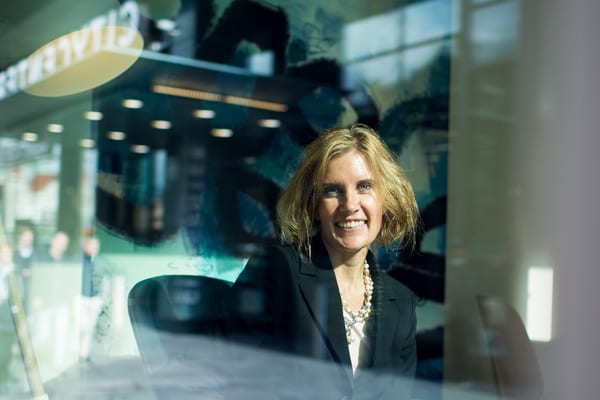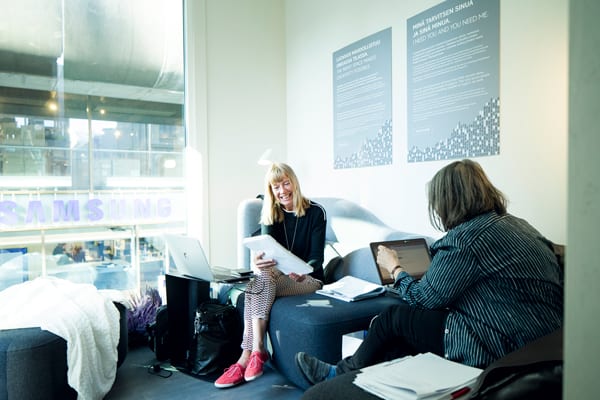
Cities of the future will be multispaces
Urbanisation is one of the major trends of our era. The significance of cities will be further increased as they play a key role in solving global challenges such as climate change. Cities of the future will also be more pronounced hubs of innovation where residential and office spaces mix and overlap.
The above is an assessment by Miimu Airaksinen, Research Professor at VTT Technical Research Centre of Finland Ltd and leader of the international Smart Cities task group. The group’s tasks include observing the impact of new energy, traffic and service systems, enabled by information and communications technologies, on the building stock, infrastructure networks and planning of land use in cities as well as identifying research and development needs in its subject matter.
“Cities consume a great deal of energy and are characterised by high mobility of people and goods. When the available space is increasingly limited, cities are seeking solutions for creating an energy-efficient and compact environment where people feel comfortable to work and to enjoy their free time,” says Airaksinen.
Today, 78% of Europeans live in cities, and 85% of the GDP in Europe is created in cities.

“According to estimates, about 80–90% of the entire global population will live in cities by 2050. The rate of development is incredibly quick,” says Airaksinen.
By 2025, the world is estimated to have nearly 40 megacities of ten million residents.
People gravitate towards places with jobs and good services. That means metropolises. An increasingly large part of innovations is created in cities, and they play a key role in solving issues such as climate change or energy efficiency.
Some international researches even assess that cities will one day match states as operators in world politics as they are able to solve problems and implement solutions faster than countries.
Returning to nature in the middle of a city
According to Airaksinen, a number of microtrends are simultaneously at work in cities. Compact construction becomes more common when there is less space available.
“Extensions to existing buildings and more efficient use of underground space will increase. The traditional division into residential areas and office environments will be obscured. Cities will be created into multispace environments, enhancing their vitality. Mixed construction will also improve the safety of areas as well as efficient use of space when the services are constantly available,” says Airaksinen.
Digital, intelligent solutions enrich the supply of services that will become more diversified as new needs surface.

“New means of providing package solutions and reaching city dwellers interested in various things will arise alongside services designed according to the traditional target group mindset,” assesses Airaksinen.
To counterbalance concrete and wood construction and asphalt surfaces, cities will feature more and more urban landscaping: green areas and parks that will not only increase the pleasantness of the cities but also act as energy solutions.
“Green areas can help improve the microclimate of compact city milieus,” says Airaksinen.
Normalising co-working and co-living
Airaksinen estimates that future cities will need new types of premises for the requirements of both work and free time. Communal co-working facilities or temporary meeting rooms serve information workers and small enterprises working in a mobile manner. When people live in confined spaces, there is more need for comfortable facilities for large family celebrations or other gatherings.
“When fewer and fewer people own cars, there is less need for parking spaces, and parking halls can be utilised as logistics facilities of shops, for example,” says Airaksinen.
In September, Sponda took part in an installation for Helsinki Design Week, constructing architect Marco Casagrande’s micro apartment building Tikku, the size of a parking space, on Keskuskatu. The philosophy behind Tikku is that when the use of cars in city centres is reduced, parking spaces can be used as plots for temporary or even more permanent buildings. In Helsinki, some parking spaces have already been transformed into restaurant terraces.
An increasing number of various assembly facilities and meeting places are being constructed in shopping centres. Businesses, in turn, can open some of their offices and work spaces into public co-working platforms where they can develop new products and services together with their stakeholders or consumers.
Vision of the future city
What will the city transformed by global megatrends be actually like?
According to Miimu Airaksinen, mobility will be one of the most obvious changes in the city of the future. The traffic will be emission-free and based on services. Services like Mobility as
a Service (MaaS) will enable the highly efficient use of various means of transport with a single monthly fee. Robotics will also become more common in transport.
Virtual reality will reduce the need to travel to meetings. Hologram meetings will replace the current video conferences. The time saved by not travelling from one meeting to the next will cut back people’s working hours.
In the future, even energy production will be emission-free or at least very low in emissions. Surfaces, including transparent windowpanes, will constantly collect energy. Indoor surfaces can also be used to recycle energy from the lighting. In the future, chairs will also be able to collect the heat produced by their users.
Many surfaces will be self-cleaning. The buildings will identify their users and automatically adjust to the conditions preferred by them.
Cities will also be greener. Urban landscaping will cleanse and freshen the city air and bind floodwater after heavy rains. In future cities, some of the food will be produced on green walls that may be located indoors.
Insects will be used in food production. Organisms and plants can also be partially used as ingredients for new material, medication, etc. They can also be utilised for producing energy.
Recycling will be highly efficient. Printed sensors and artificial vision and intelligence in the recycling system will enable waste to identify their location of sorting independent of the consumer.
All in all, Airaksinen envisages the city of the future as a communal space where the intelligent solutions of digitalisation are omnipresent in order to make our everyday lives easier. However, the city is always developed on human terms, not those of machinery.

Published 25.10.2017
